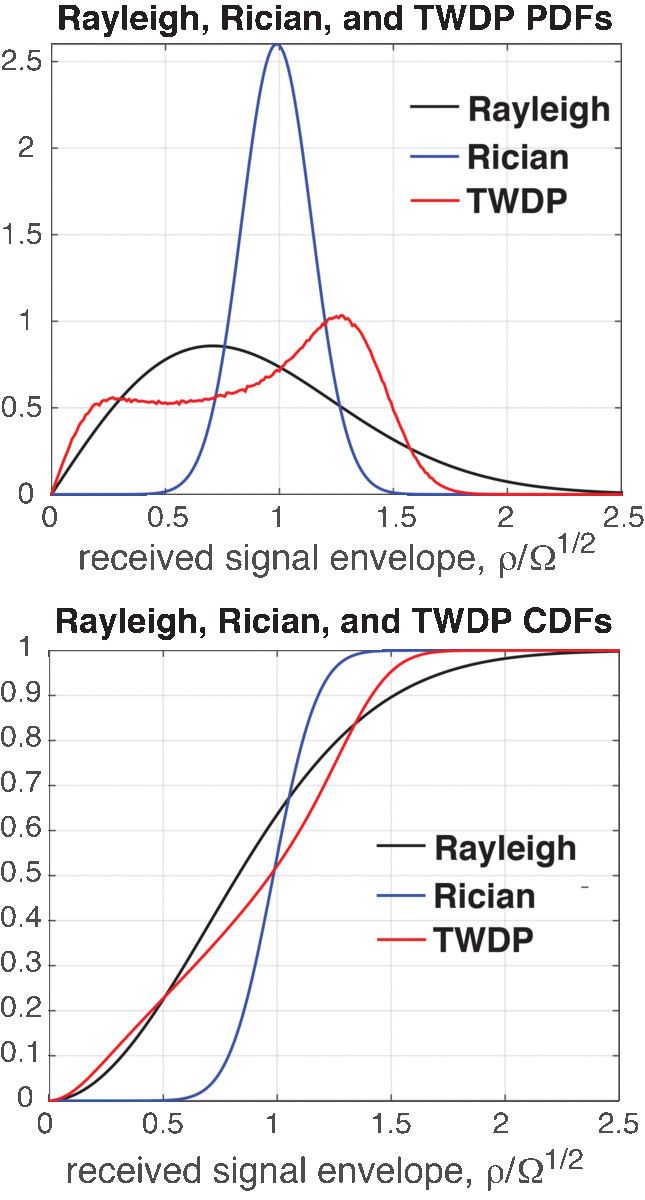 | ||
Two-Wave with Diffuse Power or TWDP fading is a stochastic model for radio propagation fading. This type of fading is caused by the constructive-destructive interference of two strong radio waves and numerous smaller, diffuse waves. TWDP fading is a generalized form of physics-based wave fading distributions, which include Rayleigh fading and Rician fading as special cases.
Contents
History
For signal analysis, mathematicians and scientists had long sought envelope statistics for the problem of two sinusoids in the presence of Gaussian noise. The application of this scenario for radio wave propagation, including the name two-wave with diffuse power (TWDP) fading and its popular KΔ parameterization, was first presented by Durgin, Rappaport, and de Wolf. Frolik was the first to measure TWDP fading (in a plane fuselage), coining the term Hyper-Rayleigh to denote this and other fading scenarios that result in worse-than-Rayleigh received power outages for a radio link. Subsequently, other researchers have developed alternate, improved expressions for the TWDP distribution and its statistics.
Channel Characterization
TWDP fading arises in a radio channel characterized by two constant-amplitude waves and numerous, smaller radio waves that are randomly phased with respect to one another. A TWDP-distributed envelope R follows from the following combination of elementary random variables:
where
TWDP fading PDF is characterized by three parameters: average power Ω, ratio of specular-to-diffuse power K, and disparity between specular components Δ. These three parameters are related to the amplitudes of the individual waves by
The K-factor may vary from 0 to
Unlike its special cases of Rayleigh and Rician fading, there is no simple, closed-form solution for the probability density function (PDF) of received envelope for TWDP fading. Instead, the exact PDF is the result of the following definite integral:
Numerous techniques have been proposed to approximate the TWDP PDF in closed form or evaluate its statistics directly. The most commonly used approximate PDF for TWDP is
where
Implications for Wireless Communications
The formulation of TWDP fading upends conventional RF design by demonstrating a common physical scenario in which deep fades in received power occur more often than Rayleigh fading—often considered the "worst case design" scenario in fading wireless links by engineers and scientists. Thus, common performance metrics in mobile communications such as bit error rate, outage probability, diversity gains, etc. can be significantly degraded by TWDP fading. Both measurements and theoretical predictions have shown that TWDP fading becomes more common as mobile radio links increase in both frequency and density.
